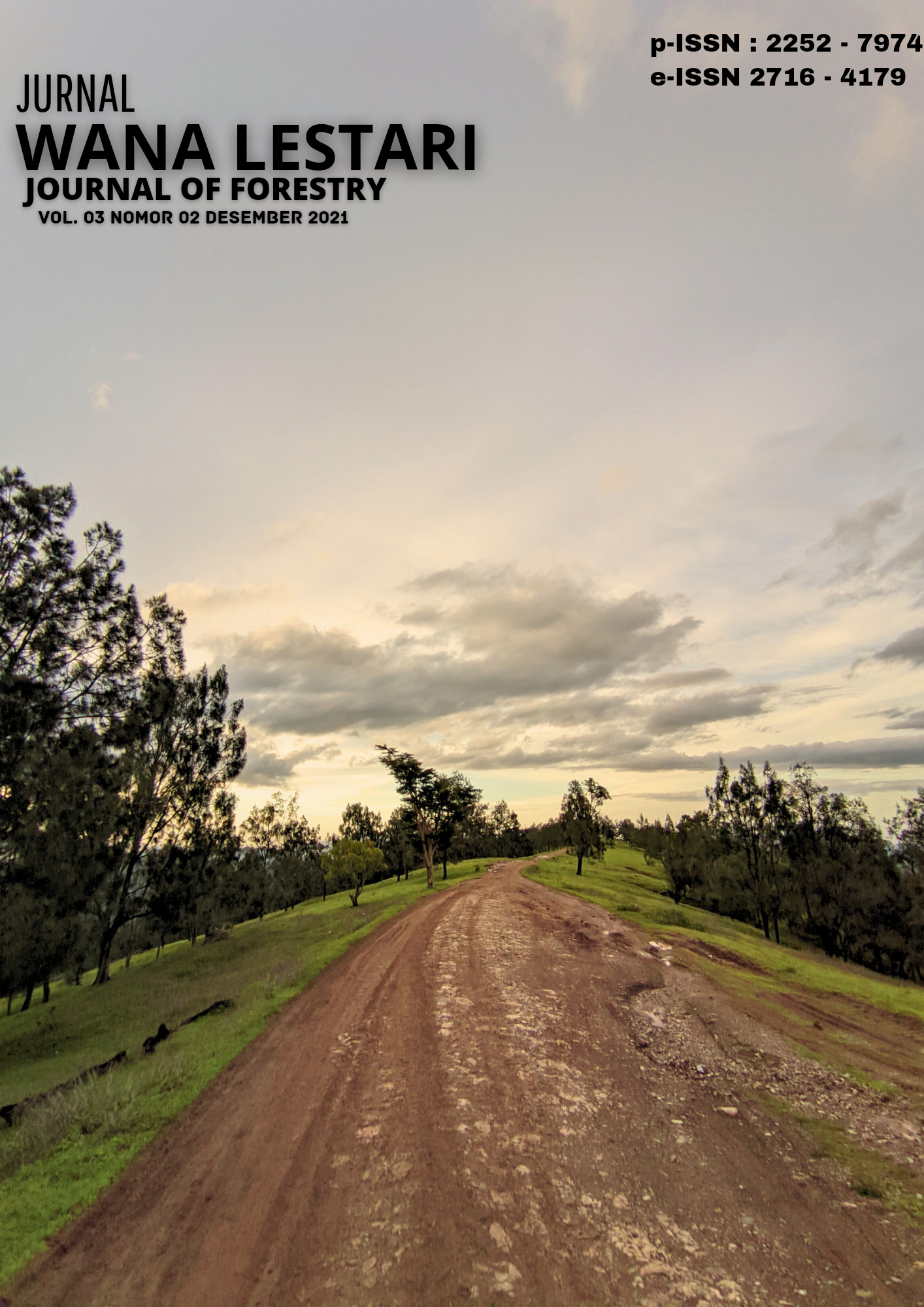GIS BASED - LAND SUITABILITY EVALUATION OF CAJUPUTI (Melaleuca cajuputi) IN PLAYEN FOREST AREA
Abstract
As an essential non timber wood product in Indonesia, optimization of cajuput (Melaleuca cajuputi) development can be determined through land suitability studies. BKPH Yogyakarta is a government organisation that managing forest area in Daerah Istimewa Yogyakarta Province. Playen Forest Area is one of BKPH Yogyakarta managing area that used for developing cajuputi. Geographic Information System (GIS) is one of the tools that can be used to handle spatial data. The purpose of this study was to determine the distribution of land suitability classes for cajuput in BDH Playen. A parametric approach was used to determine the land suitability class. Two methods in the parametric approach used are the storie and root square land index. From the research, the land index value of the stories equation tends to be smaller than the root square equation. The results of the root square method are considered more relevant to the conditions in the field, where the cajuputi stands in BDH Playen can still produce commercially. There are 3 (three) land suitability classes for cajuput in BDH Playen, namely marginally suaitable (S3), currently not suitable (N1) and permanently not suitable N2. The broad percentage of the total land suitability classes S3, N1 and N2 is 61.7%, 16% and 22.3% respectively. Rainfall becomes a limiting factor in all three classes of land suitability. In the land suitability class N1 and N2 there are several limiting factors, namely the problem of soil tends to be alkaline, shallow soil depth, drainage is hampered.

 Raindras Dwiarsa(1)
Raindras Dwiarsa(1)







